Samsung SD Card Corrupted/Formatting|Best Data Recovery Guide
A complete guide to recovering data from corrupted Samsung SD cards, using safe repair methods, deep recovery tools, and step-by-step instructions to prevent data loss before formatting.
Modern Samsung smartphones and tablets often rely on SD cards for storing large photo libraries, videos, downloads, WhatsApp folders, and app data. But the moment an SD card becomes corrupted or forces a formatting request, the panic begins—photos disappear, videos won’t open, or the phone repeatedly asks: “SD card corrupted. Format to continue?”
This article takes you through a deep, practical exploration of why Samsung SD card corruption happens, what signs to look for, and—most importantly—the safest and most effective ways to recover your files before formatting. Unlike generic online guides, this article dives into more realistic scenarios and provides actionable, step-by-step instructions. One of the methods will use our own tool: iDatApp Android Data Recovery.
This is not a cookie-cutter troubleshooting guide; instead, you’ll get real-world reasoning, technical insights, recovery strategies, and practical advice tailored for Samsung devices and common microSD card issues.
Guide List
- Why Samsung SD Cards Become Corrupted or Ask for Formatting?
- Method 1: Recover Data Using iDatapp Data Recovery
- Method 2: Recover Data with iDatapp Android Data Recovery
- Method 3: Repair the SD Card Using Samsung’s Built-In Storage Diagnostics
- Method 4: Recover Files by Accessing Hidden, Cached, or Auto-Synced Folders
- Method 5: Run CHKDSK or Disk Utility on a PC to Repair File System Errors
- Additional Important Tips Before Formatting the SD Card
- FAQ: Common Questions About Samsung SD Card Corruption
Why Samsung SD Cards Become Corrupted or Ask for Formatting?
Corruption isn’t always caused by a single event—it’s usually a combination of hardware stress, system conflicts, and long-term wear. Most Samsung users experience these symptoms:
- SD card not detected intermittently
- Photo thumbnails turning grey
- Files turning into 0-byte size
- Apps crashing when reading SD storage
- Error: “This SD card is corrupted. Try formatting it.”
- Slow read/write speed or freezing when copying files
The following issues often trigger corruption:
- Removing the SD card while the phone is writing data
- Sudden power loss
- File system errors (FAT32, exFAT damage)
- Malware from file-sharing apps
- Physical wear on older microSD cards
- Bad memory sectors accumulating over time
Understanding the root problem helps determine which recovery method is the safest, because some methods can make the damage worse if used incorrectly.
Method 1: Recover Data Using iDatapp Data Recovery (Highest Success Rate for Corrupted Samsung SD Cards)
When Samsung declares the SD card as corrupted, the internal file system is typically unstable or unreadable. This is where iDatapp Data Recovery excels because it doesn’t rely on the phone’s file system at all—it scans raw sectors to reconstruct images, videos, audio, documents, and app media. It works even when the card cannot mount or shows “0 bytes.” The software also allows file preview before recovery, giving users reassurance that the data is still intact. For deep corruption, PC-based scanning is consistently more successful than phone-based apps.

Steps
1.Power off your Samsung phone and remove the SD card carefully.
2.Insert the card into a PC card reader for stable scanning.
3.Launch iDatapp Data Recovery and choose SD Card Recovery.
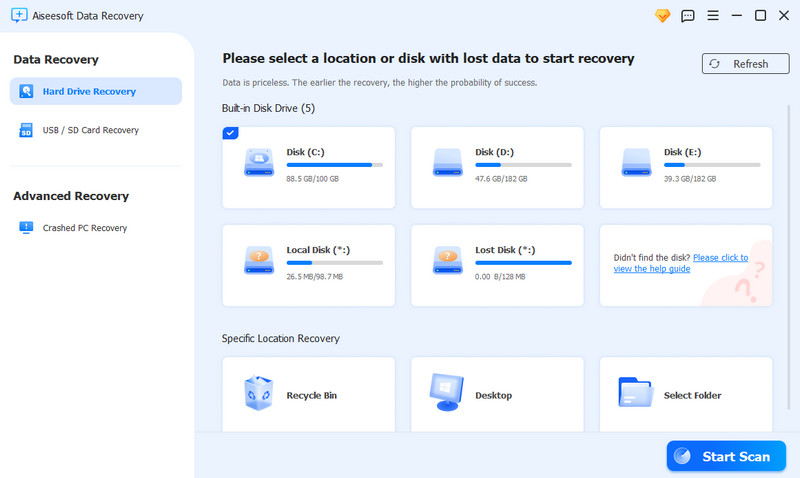
4.Select your SD card and click Scan.
5.Wait for the deep scan to identify recoverable files.
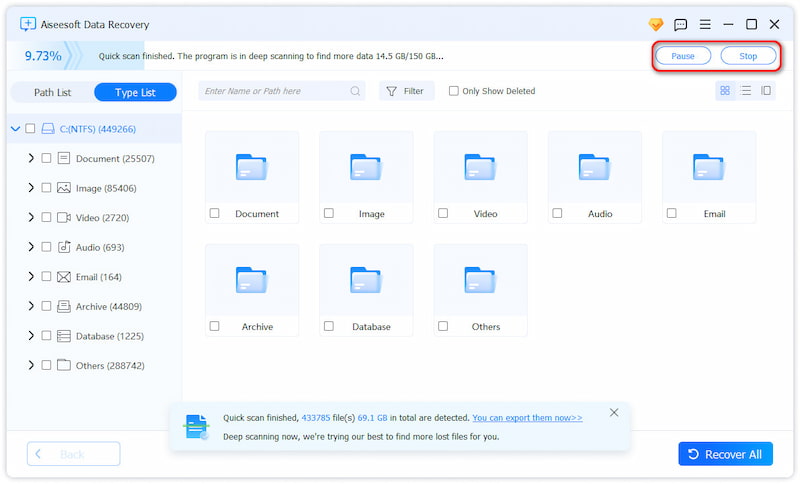
6.Preview the detected photos, videos, or documents.
7.Select the files you want and click Recover.

8.Save the files to your PC—not back to the damaged SD card.
Method 2: Recover Data with iDatapp Android Data Recovery (Safest for Deep, Corrupted SD Scans)
When an SD card is severely corrupted or continuously demands formatting, phone-based recovery becomes unreliable. iDatapp Android Data Recovery offers a deeper, sector-level scan that can retrieve photos, videos, audio files, WhatsApp media, and folders even when the card isn’t readable on your Samsung phone. Unlike lightweight mobile apps, this tool performs a structured file reconstruction, bypasses the damaged file system, and reads raw data blocks. It's especially effective for cards showing “0 byte data,” disappearing gallery files, and unreadable DCIM folders. For users who want maximum recovery success before formatting, this method is the highest-success option.

Steps
1.Download and install iDatapp Android Data Recovery on your PC.
2.Select Android Data Recovery mode.

3.Connect your Samsung phone with cable.


4.Wait while the software performs a deep scan; preview recovered files.
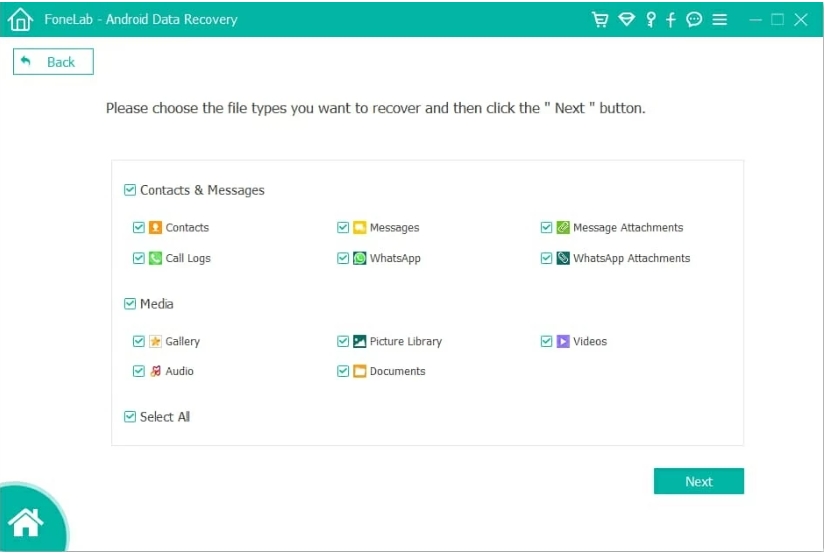
5.Select the files you want and click Recover.
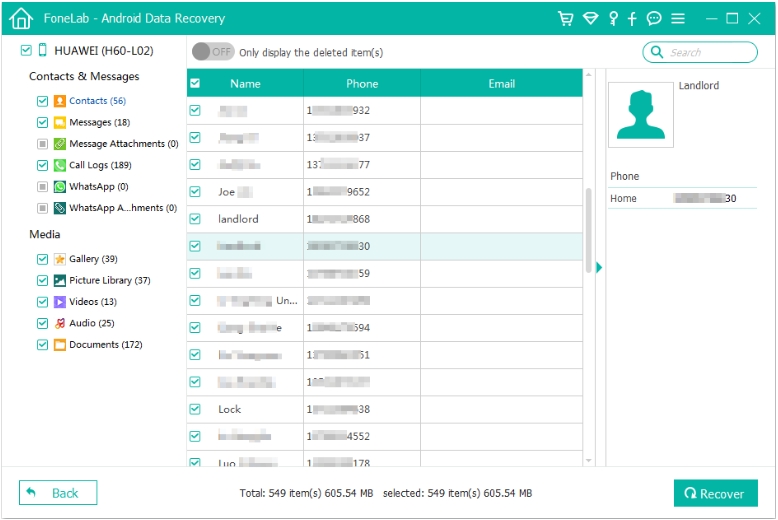
6.Save the recovered items to your computer—not back to the corrupted SD card.
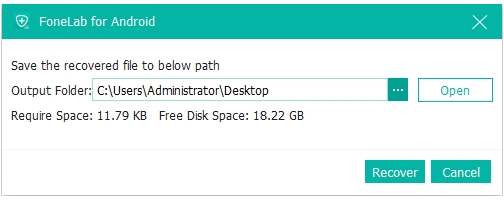
Method 3: Repair the SD Card Using Samsung’s Built-In Storage Diagnostics
Newer Samsung One UI versions include system-level storage checks that can detect basic file system damage. This method doesn’t always repair severe corruption, but it’s surprisingly effective when the SD card becomes slow or intermittently unreadable. The diagnostic process scans for small directory errors, resolves index mismatches, and refreshes the card’s mount configuration. It’s a non-destructive option, meaning it attempts to recover access without forcing a format.
Steps
- Insert the SD card into your Samsung phone.
- Go to Settings > Battery & Device Care > Storage.
- Tap the ⋮ menu in the upper right corner.
- Select Advanced > Check SD card or Scan.
- Wait for the system report and follow any repair prompts.
- Restart the phone after the scan completes.
- Check whether your Gallery and File Manager detect restored files.
Method 4: Recover Files by Accessing Hidden, Cached, or Auto-Synced Folders
Many Samsung users underestimate how much data is automatically duplicated into hidden Android directories. Even when the SD card appears blank or demands formatting, cached versions of images, WhatsApp media copies, Instagram caches, or Samsung Cloud sync remnants might still exist. This method digs into internal storage and cloud-synced folders to retrieve overlooked duplicates. It's especially useful for recovering recent photos or app-generated media.
Steps
- Connect your Samsung phone to a PC with USB.
- Open Internal Storage > DCIM, Pictures, WhatsApp > Media, and Android > data directories.
- Look for .thumbnails, cache, and sent folders—many contain image copies.
- Check Samsung Cloud or Google Photos for auto backups.
- Copy any found files to your computer.
- Only after confirming these copies, begin SD card repair attempts.
Method 5: Run CHKDSK or Disk Utility on a PC to Repair File System Errors
For users comfortable using computers, CHKDSK (Windows) and Disk Utility (macOS) can repair structural errors that prevent the SD card from mounting correctly. These tools analyze the FAT/exFAT metadata, repair directory tables, and relocate unreadable sectors. While this method won’t restore deleted data, it often makes an SD card readable again—allowing you to recover files afterward.
Steps (Windows – CHKDSK)
- Insert the SD card into your PC.
- Open Command Prompt as Administrator.
- Type: chkdsk E: /f /r /x (Replace E: with your SD card drive letter.)
- Wait for the repair to complete.
- Reopen File Explorer and check if your files reappear.
Additional Important Tips Before Formatting the SD Card
To make this guide more comprehensive and beneficial, here are deeper, real-world insights rarely included in typical online tutorials:
1. Avoid Writing New Data
Any new photo, download, or app update can overwrite your recoverable files.
2. Never Format the Card on the First Prompt
Samsung sometimes misreads a card temporarily. Rebooting or reinserting it may help.
3. Avoid Using Low-Quality Card Readers
Cheap USB adapters often cause connection dropouts and worsen corruption issues.
4. Avoid Mobile “Repair” Apps
Many perform unsafe write operations or secretly resize partitions.
5. Check If Your SD Card Is Counterfeit
Fake SD cards mimic large capacities but corrupt data instantly. Test using a PC tool such as H2testw.
FAQ: Common Questions About Samsung SD Card Corruption
Why does my Samsung phone suddenly say “SD card corrupted”?
This usually occurs when the card’s file system develops errors, the device cannot read the directory structure, or the card experiences physical wear. It also happens after improper removal or unstable power during writing.
Can I fix a corrupted SD card without formatting?
Yes. Tools like iDatApp Android Data Recovery, PC-level CHKDSK, and Samsung’s storage diagnostics can repair or recover data without formatting. Always attempt recovery before formatting.
Will formatting the SD card delete everything permanently?
Yes, formatting erases all data. Some deep recovery tools can still extract files afterward, but success drops significantly, so it’s recommended to recover before formatting.
Why does my SD card keep disconnecting from my Samsung phone?
It may be due to poor card-reader contact, old hardware, degraded memory cells, or incompatible filesystem formatting. Cleaning the contacts or reformatting in-phone usually resolves it.
Can SD card corruption damage my Samsung phone?
No, but constant system-level mounting errors can slow your phone or cause app crashes. The phone itself remains safe; only the card is affected.
Final Summary
Recovering data from a corrupted Samsung SD card requires caution, patience, and the right tools. Whether you choose deep recovery using iDatapp Android Data Recovery or try system-based repairs like Samsung diagnostics and CHKDSK, avoid formatting until recovery is complete. This guide provides practical steps, deeper technical reasoning, and real-world tips to maximize your chances of restoring precious files.

